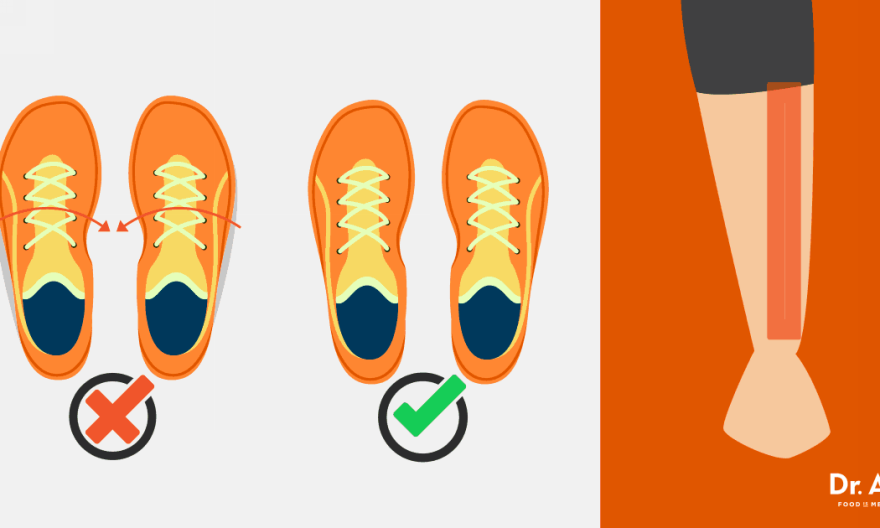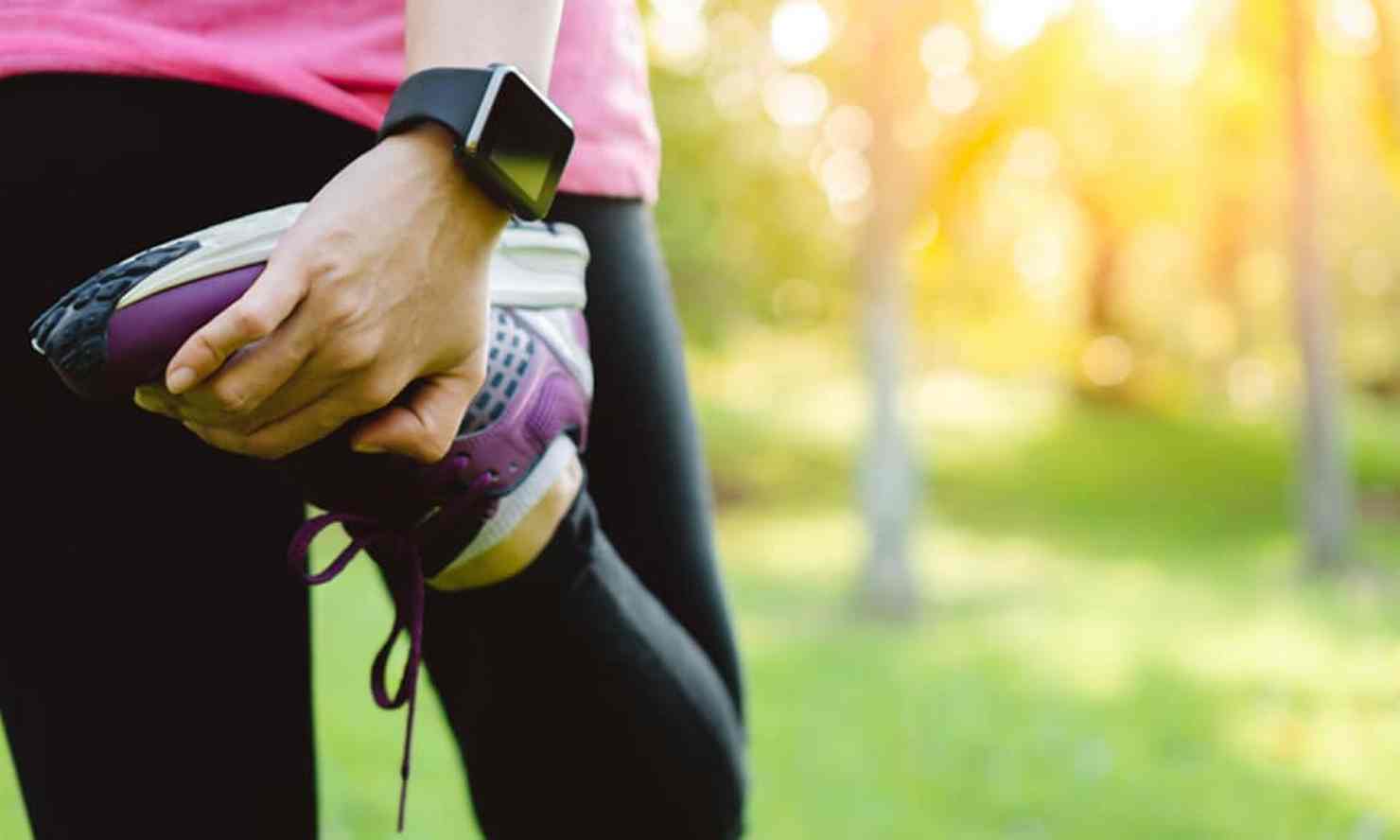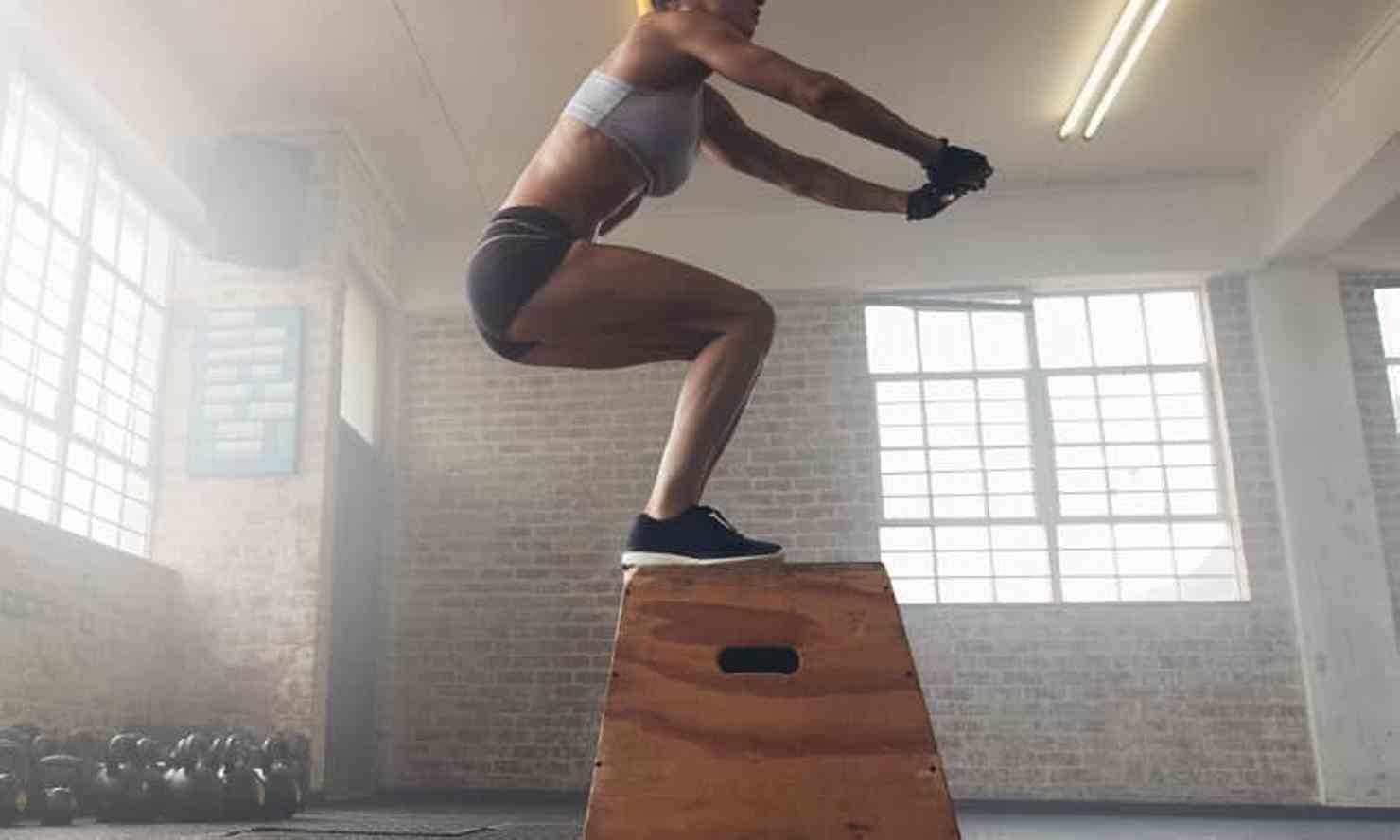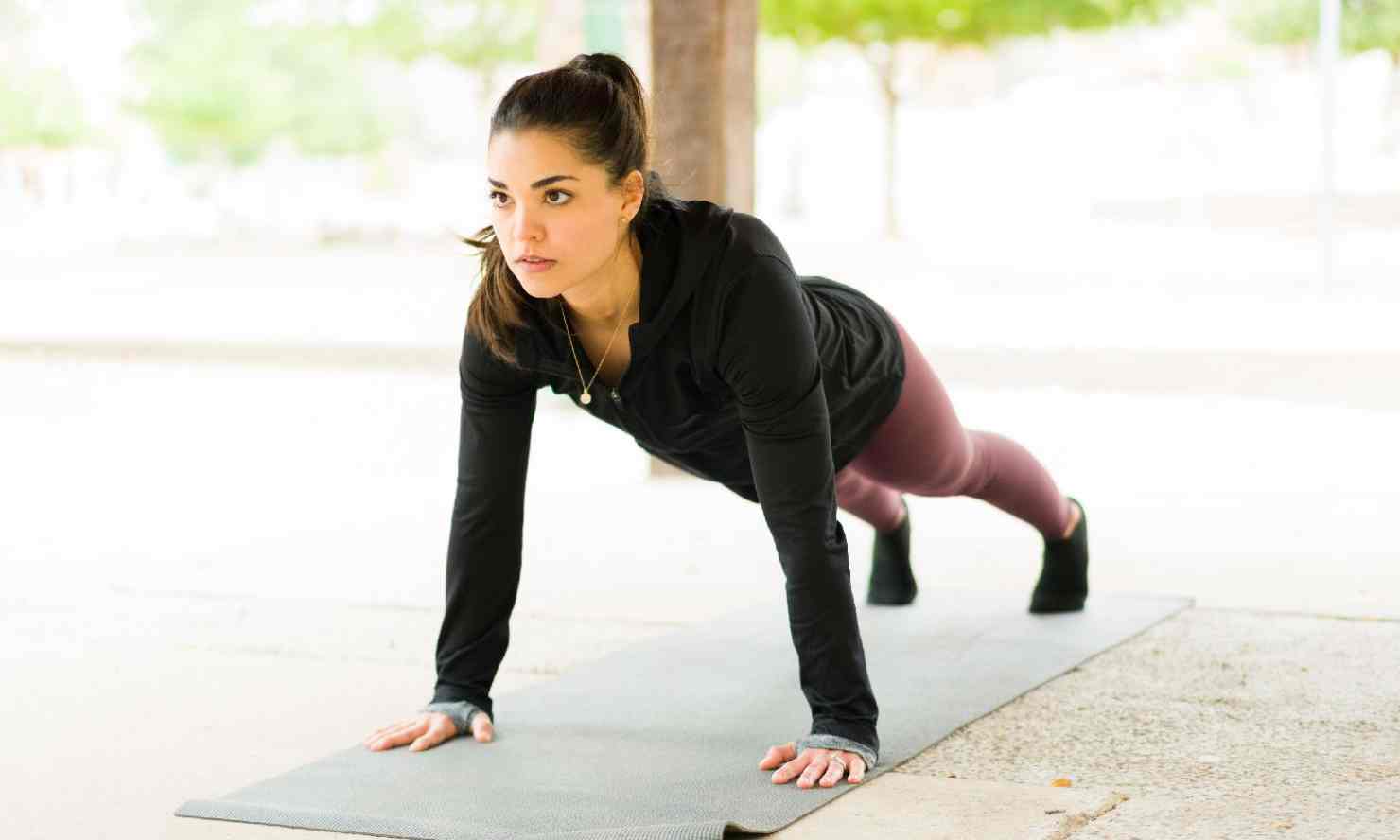
Pronation deviations that occur at the feet and ankles — called overpronation or underpronation (also known as supination) — are some of the most common underlying postural problems that adults develop. To one degree or another, collapsed arches may now affect the majority of the adult population living in industrialized nations.
Overpronation is such a prevalent problem due to people wearing unsupportive shoes, having weak legs and walking on flat, hard surfaces. All of these contribute to changes in soft tissue structures of the feet, including loosened joints that cause foot bones to shift.
Considering our feet are usually the only point of contact we have with the ground, it’s not that surprising to learn that pronation abnormalities of the feet are common source of aches and pains. These problems begin in the arches of the feet and heels but often spread up to the calves, ankles, knees and even back.
People could be searching for low back pain relief without even understanding the source of the pain is the foot. Over- or underpronation during exercise or while playing sports can raise your risk for experiencing injuries, since pronation affects how you stand, run and distribute your body weight.
Today, a key focus of physical therapists, personal trainers, coaches and other practitioners who treat muscular compensations is identifying and correcting moderate to severe cases of overpronation problems (such as foot flattening) or those due to underpronation/excess supination (like having high arches). Because these affect the entire “kinetic chain” of the body, they can alter how the body’s weight is distributed and shock is absorbed during movement.
What Is Pronation?
The definition of pronation is “the rotation of the medial bones in the midtarsal region of the foot inward and downward, so that in walking the foot tends to come down on its inner margin.”
Although no one’s body is perfectly symmetrical and balanced, and therefore some over- or underpronation is considered normal, too much pronation in either direction affects the normal gait cycle. The gait cycle takes place as the body moves forward.
Rotation of the feet helps provide shock absorption in the lower half of the body and keeps correct form/posture through the pelvis and spine.
The body moves in one continuous kinetic chain, which depends on the position of the subtalar joint. The subtalar joint accounts for a large portion of the inversion and eversion range of motion of the hindfoot, plus determines how the tibia and femur bones of the legs are lined up.
It also allows the foot to accommodate to uneven or irregular surfaces. Over time, an overpronated subtalar joint typically forces the tibia and femur bones to rotate inward, sometimes only very slightly, but in other cases more severely.
What are the causes of pronation abnormalities? These can include a combination of:
- Genetics
- Muscular compensations due to poor postureor old injuries; old injuries can leave scar tissue behind on your lower legs that set the scene for future pains and weaknesses
- Poor form from not running correctly (Here’s how to how to run correctly.)
- Weakness in the lower body from too little activity or limited range of motion and stiffness due to aging
- Overuse, such as from exercising too much or standing for long periods (While rest is important for recovery, keep in mind that if the underlying problem of your heel pain is bad running form or not wearing supportive enough shoes, the core problem won’t be addressed even when you rest enough.)
- Loss of cartilage in the subtalar joint of the foot, often due to arthritis/osteoarthritis
- Dysfunction of the tibialis posterior tendon is a common cause of “acquired flatfoot deformity” (severely fallen arches) in adults, especially in women older than 40, who seem to be at the greatest risk. The tibialis posterior tendon is the primary dynamic stabilizer of the middle part of the foot and arches. It helps elevate the foot’s arch, raise the small bones in the middle part of the feet and make the midfoot rigid.
Common signs and symptoms of overpronation or underpronation usually include:
- Pain moving from the foot upward. Pain will most likely occur when standing for a long time, walking or running. It might spread all the way from the underfoot and heel to the thighs and back. For example, shin splints, one of the most common running injuries, are caused over time by a series of dysfunctional musculoskeletal movements stemming from the feet and calves.
- Swelling in the ankle or heel. Most patients complain of swelling that is localized in the middle or side part (medial or lateral aspects) of the underfoot or heel. Sometimes the toes are affected, too.
- Stiffness, loss of functioning and reduced range of motion in the feet or lower body.
The good news is the arches in your feet are just like any other muscle in the body. They can be “taught” or trained to improve in terms of functionality, so pain from overpronation or underpronation is definitely treatable.
Overpronation vs. Underpronation
- When overpronation occurs, the foot rolls in too much either while you’re moving (after landing the foot) or while you’re standing. Overpronation is the result of “flat feet,” or the arches of the feet “collapsing” and rolling inward. When standing, the arches of the fleet flatten too much toward the ground.
- With overpronation, the big toe and second toe wind up absorbing too much shock. At the end of the gait cycle, the front of the foot pushes off the ground using mainly these toes, applying lots of pressure, which can cause pain. Overpronation can also contribute to injuries, including runner’s knee, stress fractures, plantar fasciitis and Achilles tendinitis in some cases.
- Underpronation (excess supination) is the insufficient inward rolling of the foot after landing on the ground. Writers of Runner’s World magazine state that compared to people with healthy, normal posture, those with underpronation don’t roll the foot inward enough (less than 15 percent) and therefore absorb shock on only a small portion of the outer foot.
- Runners with high arches and tight Achilles tendons tend to be underpronators/supinators. With underpronation, the outer toes/pinky toe tend to be bear a lot of weight when pushing the foot away from the ground during movement. This can lead to pain or overuse injuries. These may include iliotibial band syndrome that affects the knees, Achilles tendinitis and plantar fasciitis, along with general instability and stiffness.
How to Spot Pronation Deviations
Even very small changes in the alignment of the ankles, knees and hips can cause visible changes to your posture or straining (such as valgus stress, the cause of collapsed knees or runner’s knee pain).
How do you know if you’ve developed abnormal pronation? To give you an idea of what healthy posture should look and feel like, try observing your posture.
Starting from your toes moving upward, here are several key areas to observe in your stance. These observations can clue you in to overpronation or underpronation/supination issues:
- Stand with your shoes off, facing straight forward. Place both hands on your thighs, and straighten the back upright.
- Now, check the stance of your thighs, knees, ankles and toes.
- Both feet and knees should face forward in parallel or with minor external rotation of the toes outward.
- Generally, the toes should be aligned in the same direction as the feet and ankles (forward). The ankles and knees should be facing forward, not rolling inward or outward more than very slightly.
- If the knees appear to roll inward and toes outward, this is called “internal pronation.” On the other hand, if the knees are facing outward, this is called “external supination” (also referred to as underpronation).
- You can also draw a line on the front of your legs running from your thighs, through your knees to your ankles. Check if the line is curved in any particular spot.
Conventional Treatment for Pronation Problems
Most orthopedics or trainers complete a physical exam of the lower extremities to look for signs of abnormal pronation and imbalances. Usually, they pay particular attention to any loss of functionality or sensory function (due to nerve damage) if pain is strong.
- Once overpronation or underpronation is diagnosed, many podiatrists recommend wearing shoe inserts (sometimes called orthotics or “orthotic technology”). These can help correct alignment of the foot. They are used most often for excessive pronation or in the case of acquired flatfoot deformity. Orthotic inserts in the shoes consist of a longitudinal arch support with a medial heel post. Shoe inserts help lift the arches of the feet and stop the rolling inward motion of the knees that can cause pain.
- Orthotic technology products can help many people feel more comfortable while standing, reduce low back or heel pain, and prevent muscular strains due to compensations in the pelvis or spine. Although it’s rarer, custom bracing to keep the lower legs in place is also sometimes used.
- Physical therapy is sometimes also needed if pronation problems become severe. A physical therapist or corrective exercise specialist can help teach clients customized stretches and exercises to retrain the lower extremities to balance weight properly.
- If pain ever becomes very bad, some doctors might also prescribe anti-inflammatory medication to decrease swelling and tissue/joint inflammation. Only very rarely is surgery needed to correct severe pronation problems, such as acquired flatfoot deformity.
Natural Ways to Correct Overpronation
1. Improve Your Posture and Form
Improper form when standing, exercising or especially running is one of the most common underlying reasons for foot, heel and leg pains. This can lead to dysfunctions that cause symptoms to reappear again and again, even if you begin gradually and then rest enough in between sessions.
When it comes to exercise-related injuries, many of the most common are due to fallen arches and flat feet.
Look for any of the signs below that indicate you’re using incorrect form:
- Not rolling arches upward (having flat feet when you strike the ground), which means stepping causes your arches to collapse
- Having the heel strike the ground too abruptly without rolling it evenly forward — in other words, you’re “pounding” the foot too much
- Not lifting the toes, which can cause you to trip often
Try to have the foot/heel make contact with the ground from the outside. Experiment with landing closer to the midfoot if you’re a heel striker, and aim for a softer landing. Most runners naturally land more lightly when they don’t lead with the heel.
Slightly increase cadence — the number of steps you take per minute. Avoid having only the toes do most of the pushing during liftoff.
This might take some time to improve, but with training and practice it will become easier.
2. Stretch Your Legs More
Overpronation often causes extra stress and stiffness in the leg and lower back muscles that can make matters worse. Regularly stretching the legs, especially after workouts, can help increase flexibility, range of motion and blood flow in painful areas.
Ways to stretch the calves and hamstrings include:
- If you have a foam roller (and your doctor says you are able to use it), it’s great to foam roll your calves before stretching. Be sure to hold each tender spot for at least 30 seconds; don’t just quickly roll back and forth.
- Raising and lowering your heels and toes to the ground (toe or heel lifts).
- Easy calf raises: Sit on the edge of a couch with your feet flat on the floor. With one leg, keeping your heel on the floor, lift and point the toes toward the ceiling, so you feel a stretch in your calf muscle. Hold for 30 seconds, and then do the same with the other leg, three times per leg.
- Toe touches: Stand with straight legs, and bend from the waist to touch the floor. Hold for 30 seconds. You can also do this with your legs stretched wide.
- Rolling the ankles in the air while laying on your back.
- Try yoga. One of the many benefits of yoga involves relieving tight legs and improving overall flexibility.
3. Visit a Soft Tissue Therapist
Massaging, loosening and activating muscles throughout the lower body and feet can help restore proper alignment and break up tissue adhesions/scar tissue that contribute to arch problems. Even if you currently overpronate (or underpronate), it doesn’t mean you have to remain this way forever. You can “reteach” your muscles and joints how to distribute your weight in a healthier way — and having assistance makes this easier.
If you stand for prolonged periods during the day, you’re an athlete or very active, or you suffer from overused heel/knee pain, techniques like physical therapy, active release technique or cross friction can be useful for improving range of motion and reducing pronation deviations. Other soft tissue therapies to consider that may reduce pain from over- or underpronation, plus prevent future injuries, include:
- chiropractic adjustments
- Graston technique
- seeing a massage therapist who can treat the calves, hamstrings and quadriceps.
4. Wear Firmer, Supportive Shoes
If you’re overpronating, you may notice that the inside soles of your shoes experiences more wear and tear than the outside. Your shoes may appear to roll inward.
Here are tips for choosing the best shoes or sneakers that are most supportive for overpronators:
- Look for thicker, firmer shoes with “motion stability.” Those who have fallen arches are more prone to injury when wearing flimsier, flexible shoes that are lightweight and have less lift/cushion near the arches.
- Look for shoes with multidensity midsoles, which can stop the feet from being able to roll inward too much.
- You may also want to add custom-made or commercially available arch supports inside your shoes. Look for insoles in a drug store, or ask your doctor for recommended orthotics that are right for your feet. You may only need an insert in one foot, but in most cases patients feel best when adding support to both.
- If you have bunions on your toes due to rubbing (see below), then also consider wearing wider shoes to give you more wiggle room.
- You may also want to consider barefoot running — a phenomenon growing in popularity among those with frequent running injuries. Running barefoot may seem even riskier than wearing the wrong sneakers, but it actually helps the feet learn proper form more easily, builds strength throughout the ankles and feet, and helps increase natural range of motion (supination and dorsiflexion).
5. Treat Calluses and Bunions
People who overpronate can develop growths or other minor injuries on their toes and feet, like calluses or bunions, from their outside heels or toes rubbing against their shoes too much. When pain becomes bad, you can apply ice several times a day for 20 minutes at a time. Elevate your affected foot to help reduce swelling, and try massaging the foot with an anti-inflammatory essential oil.
You can try applying a muscle rub on your foot to help keep swelling down. A few drops of organic essential oils, like frankincense and peppermint oil, diluted in a carrier oil, work for that purpose.
Natural Treatment for Underpronation
1. Loosen Susceptible Muscles
Supinators should do extra stretching of the calves, hamstrings, quads and iliotibial band. See above for recommended leg stretches and foam-rolling tips, plus add some of these routine:
- Ankle rolls (with feet overhead or while you’re sitting)
- Crab crawls to stretch the ankles
- Foam rolling the lower legs
- Massaging the fascia (soft tissue) in the underpart of the feet with a tennis ball or your hand
2. Strengthen the Mid and Upper Legs
Leg exercises to help reduce muscular weakness in the legs include:
- Squats
- Lunges, including side lunges, lunge dips or lunge twists
- Calf raises
- Walking uphill
- Burst training or sprinting
3. Make Sure Your Shoes Aren’t Worn Out
Signs of underpronation (excess supination) show up in your sneakers or shoes, usually causing the outer edge of the shoe to become flimsy more quickly. Replace your sneakers regularly, especially if you exercise often.
To see if you’re due for a new pair, place your shoes down on a flat surface, and look for the outer edge to tilt outward. Experts also recommend trying more flexible, lightweight sneakers for underpronators who spend lots of time on their feet (including running or walking). Lightweight shoes can withstand more foot motion, especially those with flexible inner edges.
Precautions
If working with a trainer to correct a pronation problem you’ve identified, keep in mind that attempting to treat the problem too quickly or aggressively can result in muscle fatigue and further compensations. Pronation problems should be adjusted over time so susceptible or sore muscles and joints can get used to redistributing weight and shock absorption. Otherwise postural problems may become worse.
If you feel heel pain or pain radiating upward from your ankles, consider that other problems might be contributing to your symptoms. Heel spurs, tendonitis and arthritis should be ruled out as the causes of stiffness and pain, for example.
Final Thoughts
- Pronation is the process of body weight being transferred from the heel of the foot up to the forefoot when moving, walking or running.
- The foot should naturally roll inward from the outside, but with overpronation, the arches of the feet fall/collapse too much, and increased inward rolling becomes problematic.
- On the other hand, underpronation (also called supination) means the foot doesn’t roll inward enough. Both types of pronation deviations can cause foot or lower leg pain, running injuries, low back pain, and muscular compensations.
- Natural treatments for overpronation or underpronation include fixing form when standing or exercising, stretching and strengthening the legs more, soft tissue therapies, and wearing more supportive shoes.





